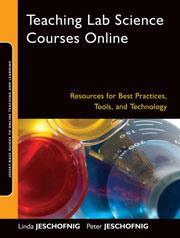Eleanor Crabb reviews this guide to online teaching and learning
Teaching lab science courses online: resources for best practices, tools, and technology
Linda Jeschofnig and Peter Jeschofnig
California, US: Jossey-Bass 2011 | Pp208 | £18.99 (PB) | ISBN9780470607046
Reviewed by Eleanor Crabb

One of a series of guides to online teaching and learning, this book makes an interesting read for anyone thinking about or currently teaching science online. Although the focus of the book is laboratory science, presenting a case for why laboratory science can be taught online, it offers useful advice on online teaching in general.
The book starts with arguments for teaching science online, in terms of its effectiveness and increasing demand, then briefly outlines the main tools used for online courses. The objectives of scientific experimentation are considered. These are followed by a discussion of the pros and cons of methods of teaching this online - from the use of virtual labs and simulations (although disappointingly not ‘interactive’ videos of real experiments where students control the variables and can make mistakes) and remote access laboratories, to experiments that students can complete at home using kitchen science, or commercial lab kits. Examples of how these different laboratory options can be incorporated within online courses is presented, as well as advice on promoting academic integrity and encouraging student participation in online discussions.
The authors, retired US college professors with experience in teaching science online, are founders of a company producing home laboratory kits. Many of the anecdotes and advice provided throughout the book and the case study in the appendix highlight this particular laboratory experience.
The book concludes with the thought that ‘science education is now at that proverbial fork in the road’ and encourages academics to take up the challenge and ‘spur science learning forward through fully online lab science instruction.’
I would recommend this book to all those thinking about online delivery of their science lab courses, with the caveats above, and I indeed wish that this book had been available when I was challenged to think about this very thing!
Related Links
Teaching lab science courses online: resources for best practices, tools, and technology
Purchase this book from Amazon.co.uk






No comments yet